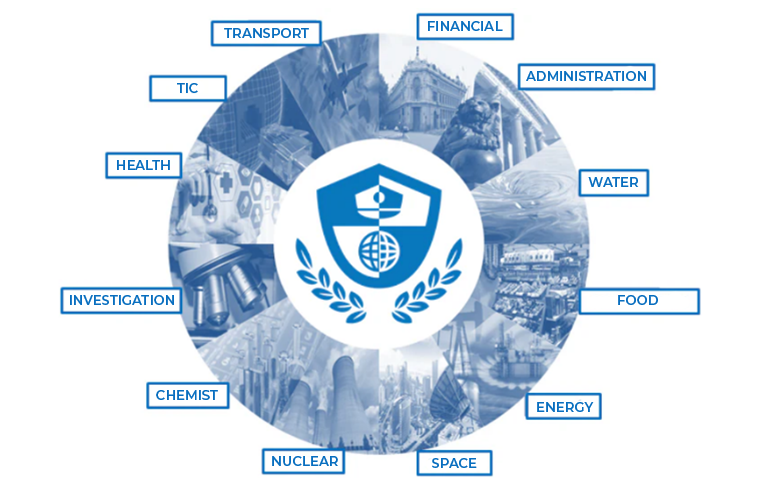
OT cybersecurity: beyond warning, the need for action
Something as simple as a bug in a software update recently crippled much of the world. On 19 July, we witnessed how a defective update of a technology company's cybersecurity software affected millions of devices worldwide, from hospitals to airlines, demonstrating the true technological dependence in which we find ourselves immersed. But what if attackers did not just cause a nuisance, but deliberately sought to sabotage critical systems?
OT systems are fundamental to the functioning of the physical world
Imagine a hospital where the MRI equipment stops working due to a cyber-attack, or a water treatment plant that suffers a disruption in its chemical levels, putting our health and an entire city's supply at risk. These scenarios, which seem like something out of a science fiction movie, are becoming increasingly real in an increasingly connected world.
To prevent events such as those mentioned above, or to minimise their impact, industrial security is concerned with protecting the systems that control physical processes in factories, power plants, transport networks and other critical infrastructure. In other words, security in industrial environments (OT) is the set of measures and technologies designed to protect the networks and systems that control the physical processes in industrial environments and critical infrastructures, guaranteeing integrity, resilience, availability and confidentiality in the face of cyber-attacks. Unlike traditional IT systems, which primarily manage data and information, OT systems are fundamental to the functioning of the physical world, making them a critical part of daily operations and public safety. In fact, these OT systems are often more vulnerable than traditional IT systems due to their age and lack of security updates.
Cyber attackers use a variety of techniques to infiltrate these systems, such as sending fraudulent emails (phishing) to workers, using infected devices or exploiting vulnerabilities in obsolete software. LISA Institute identifies the sectors with critical infrastructures most susceptible to cyber threats as: financial, government, water, food, energy, space, nuclear, chemical, research, health, technology and transport. In fact, with regard to the latter, the European Union Agency for Cybersecurity (ENISA) has determined that ransomware attacks have become the most important cyber threat facing the transport sector in the European Union, especially the air, maritime, rail and road sectors.

To address this growing threat, a number of international norms and standards have been developed, such as:
- NIST SP 800-82, a guide that provides the necessary guidelines to address security in industrial control systems (ICS), as well as all its component systems (SCADA, DCS, etc.)
- ISA/IEC 62443, a set of international standards addressing the cybersecurity of operational technology in control automation systems.
- NIS2, a European directive that strengthens the cybersecurity of OT systems, establishing stricter requirements to protect the European Union's critical and essential infrastructures, such as energy and transport networks.
The opportunities offered by the IoT are undeniable
The impact of the Internet of Things (IoT) on the creation of interconnected ecosystems, especially in industry, cannot be overlooked. The adoption of IoT in industry has brought with it a number of benefits that go beyond operational efficiency. The constant monitoring of production processes by means of intelligent sensors enables early detection of any deviation from the established parameters, which translates into a significant improvement in industrial safety. The IoT has also facilitated the implementation of energy management solutions, making it possible to optimise resource consumption and reduce companies' carbon footprint.
However, while IoT offers great potential to transform industry, its implementation also poses a number of challenges. Cybersecurity risks are a key concern, as the interconnection of devices increases the attack surface and exposes companies to new risks. In addition, managing large volumes of data and integrating different systems can be complex and costly. However, the opportunities offered by IoT are undeniable. By harnessing the capabilities of this technology, companies can improve their competitiveness, increase their efficiency and adapt to changing market demands.
We help our clients meet the most rigorous OT standards
Consequently, industrial cybersecurity is a constantly evolving field, and organisations must be prepared to adapt to new challenges and take advantage of the opportunities offered by emerging technologies. With increased connectivity, through IT-OT convergence, it is essential that organisations develop a proactive, risk-based cybersecurity strategy to protect industrial systems, ensure business continuity, safeguard the integrity of people and even mitigate environmental risks.
At Izertis we are firmly committed to cybersecurity, including industrial cybersecurity, by investing in solutions and processes that comply with OT standards. Through specialised services, we help our clients meet the most stringent OT standards, protecting their critical operations and minimising risk.

